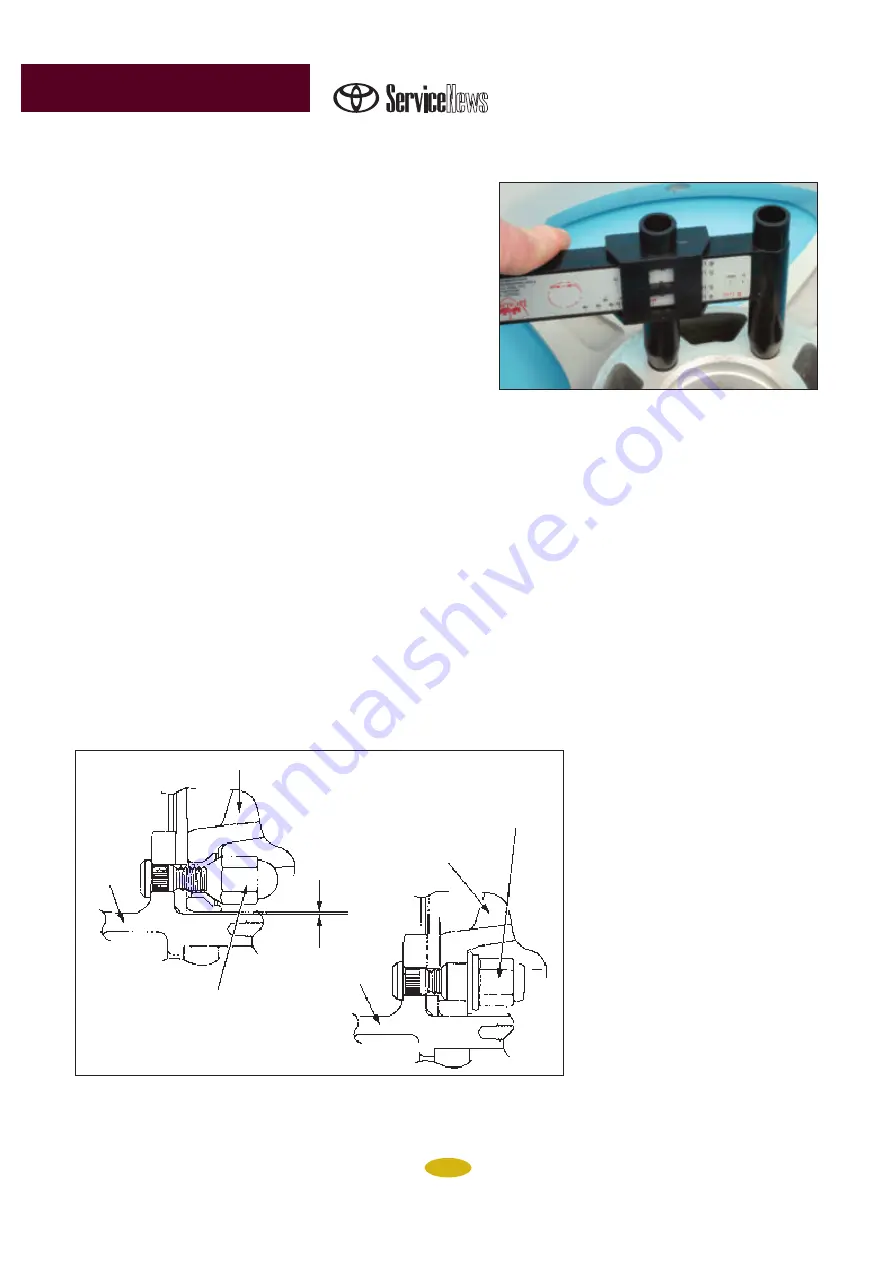
106
©2021 Kimberley Kampers Manufacturing Pty Ltd
wheel’s center section, likely on the
rear of a wheel spoke).
Checking a hub or wheel bolt pat-
tern can also be performed with the
aid of specialty tools. A bolt circle
reference “disc” (these are available
in all bolt circle sizes) offers multi-
ple hole patterns, with each hole
labeled. Simply drop the disc onto a
hub (or place on the rear mounting
surface of the wheel) until all holes
align. Note which holes align (per
the hole labels). Another method
involves the use of a specialty slid-
ing caliper type tool. Insert the two
tapered pins of the tool into two
adjacent wheel holes and note the
reading on the tool’s gauge.
WHEEL NUT SEAT STYLES
The contact area between the fas-
tener and the wheel is referred to as
the “seat.” This is the surface area
where the fastener actually contacts
the wheel and where clamping pres-
sure is applied when the fastener is
tightened. It is absolutely
vital that the seat style of
the fastener matches the
seat style of the wheel’s
fastener hole entry. The
use of incorrect seat
styles, even though
thread pitch and thread
diameter may be correct,
can easily result in wheel
damage during tighten-
ing, and fastener loosen-
ing during vehicle oper-
ation. If the fasteners
loosen, the wheel will “wobble” as it
moves in relation to the hub.
Eventually, this movement, or play,
will ruin the wheel’s fasteners holes,
resulting in either breaking the
wheel or complete loss of the
tire/wheel assembly.
Do not confuse the style or shape
of the fastener head with the shape
of the fastener’s seat. If a wheel nut
features a radiused head (rounded
head), some folks may call this an
“acorn” nut. However, others will
interpret the term “acorn” as a
radiused or ball-style fastener seat.
Always make sure that you clearly
understand the terminology for seat
styles.
The majority of Toyota wheels
require the use of conical (also
called tapered) seat-style nuts.
However, citing the 1999-2001
Avalon, Camry, Solara and Sienna
models as examples, two different
accessory wheels were offered. Style
1 (wheel part number PT351-
00990) features a conical seat, while
Style 2 (wheel part number PT351-
00991) features a flat-seat (“mag”)
style nut. Each wheel requires the
use of a specific style nut.
Attempting to use a conical-style
nut on a wheel that features flat
seats (or using a flat-seat nut on a
wheel that features conical seats)
will result in both wheel damage
and certain loosening.
AN EXPLANATION OF
WHEEL NUT SEAT STYLES
The most commonly employed
seat styles include conical, radius
and flat (“mag”). These terms refer
to the shape of the seat (where the
INSTALLING ALLOY WHEELS
8
Two types of wheel nuts are used with Toyota wheels. Some alloy
wheels use shank type (mag) wheel nuts that feature flat mounting
bosses. Steel wheels use tapered (conical) wheel nuts. The two
styles are not interchangeable.
This handy caliper-style tool can be used to
quickly determine bolt circle. Insert both pins
into adjacent holes and read the gauge.
Wheel
Wheel
Axle hub
Axle hub
Clearance
Wheel nut (taper point-type)
Wheel nut (flat point-type)
Summary of Contents for KARAVAN 2021
Page 1: ...MAINTENANCE OPERATING MANUAL THE KIMBERLEY KARAVAN Version 160921 2021 ...
Page 23: ...23 2021 Kimberley Kampers Manufacturing Pty Ltd Hitching Up Your Kimberley ...
Page 24: ...24 2021 Kimberley Kampers Manufacturing Pty Ltd Hitching Up Your Kimberley ...
Page 119: ...119 2021 Kimberley Kampers Manufacturing Pty Ltd Notes ...
































